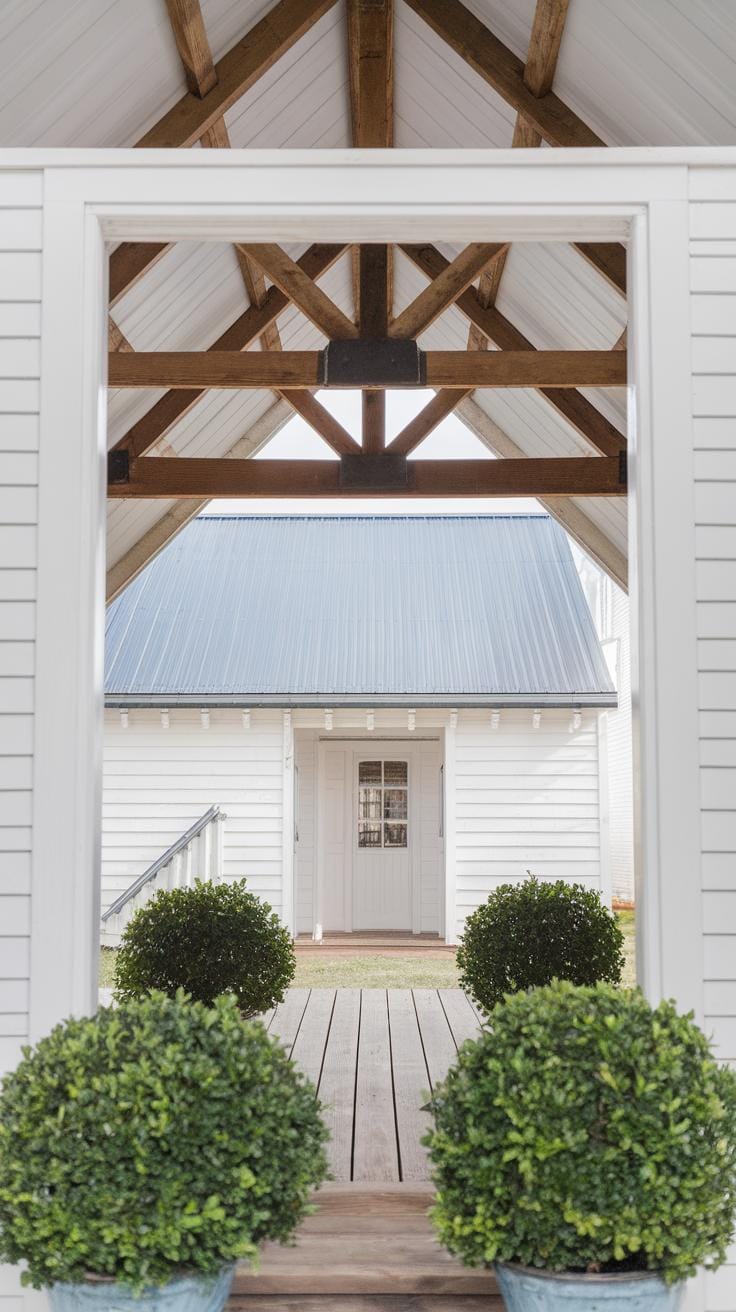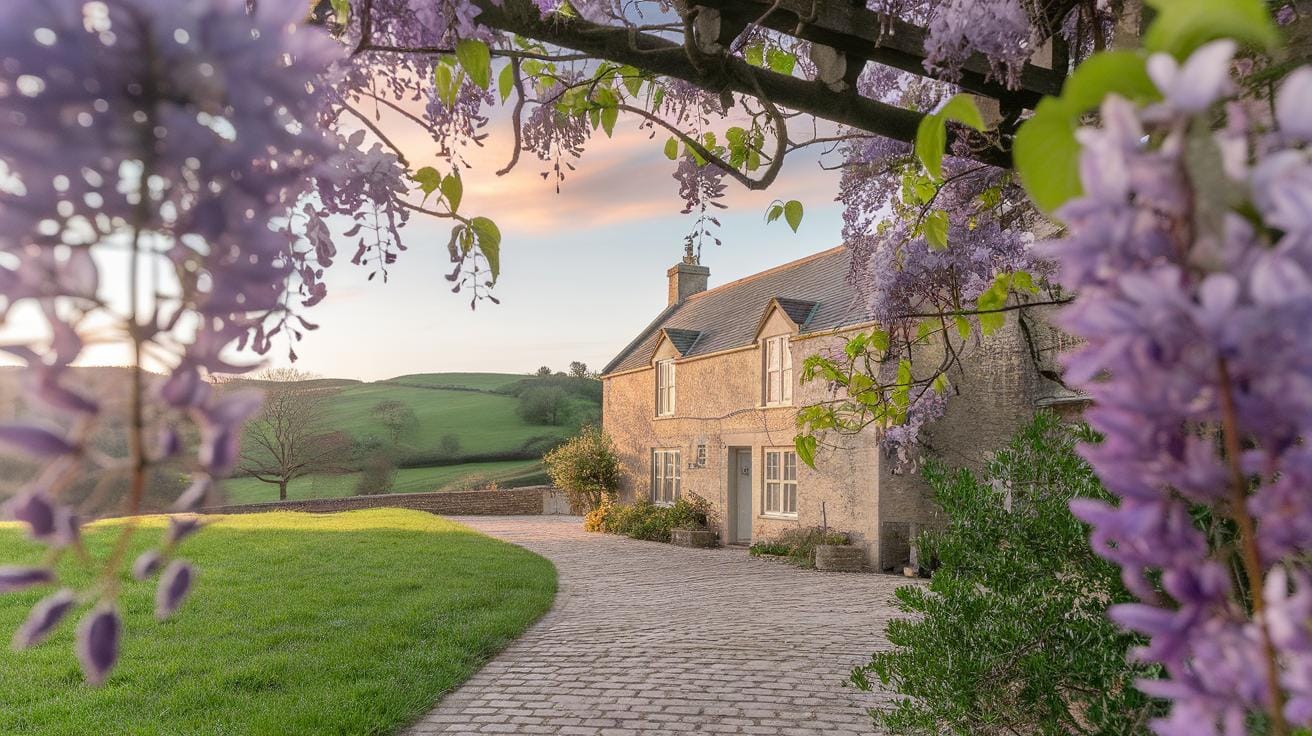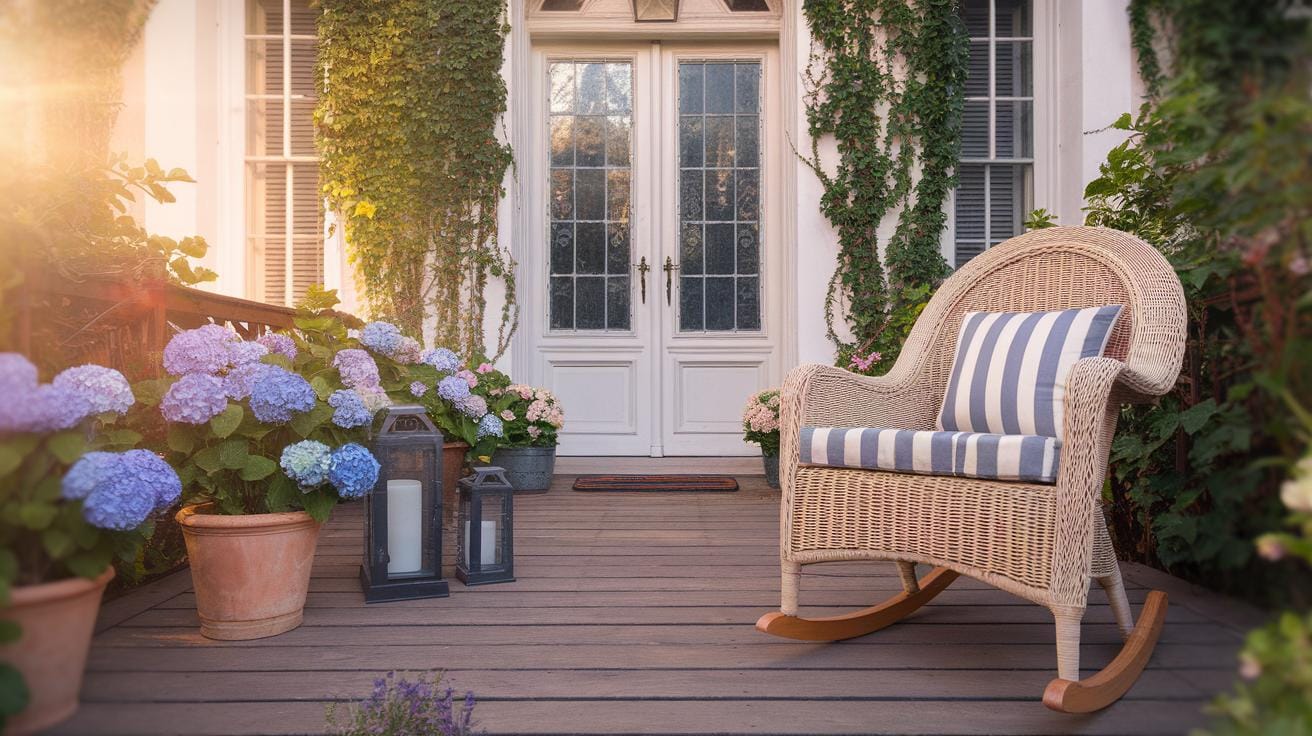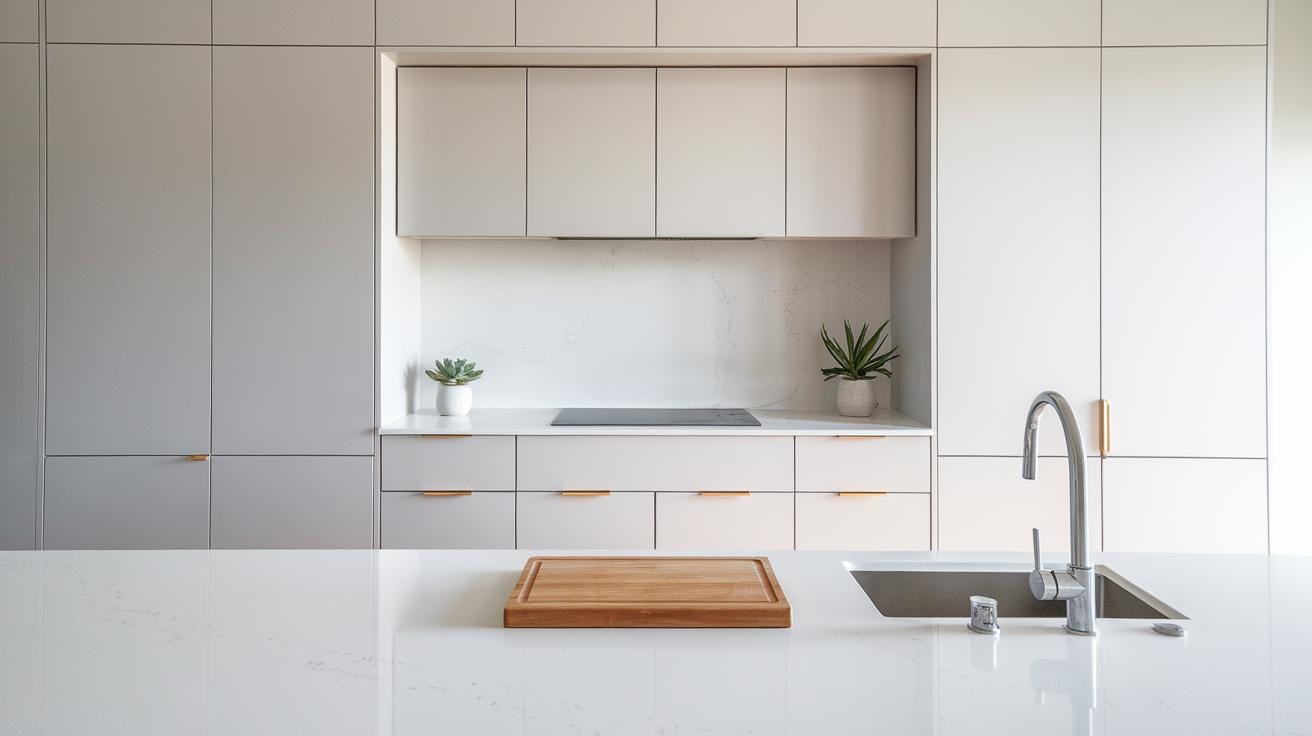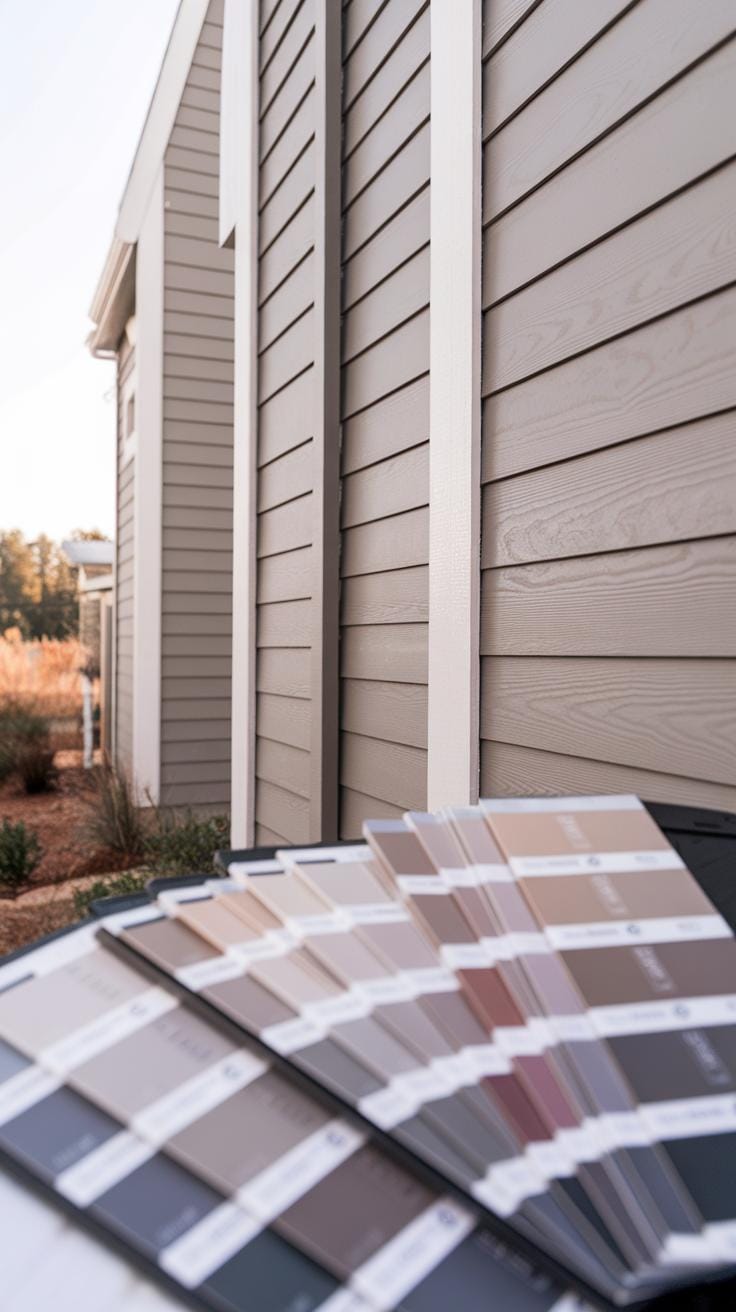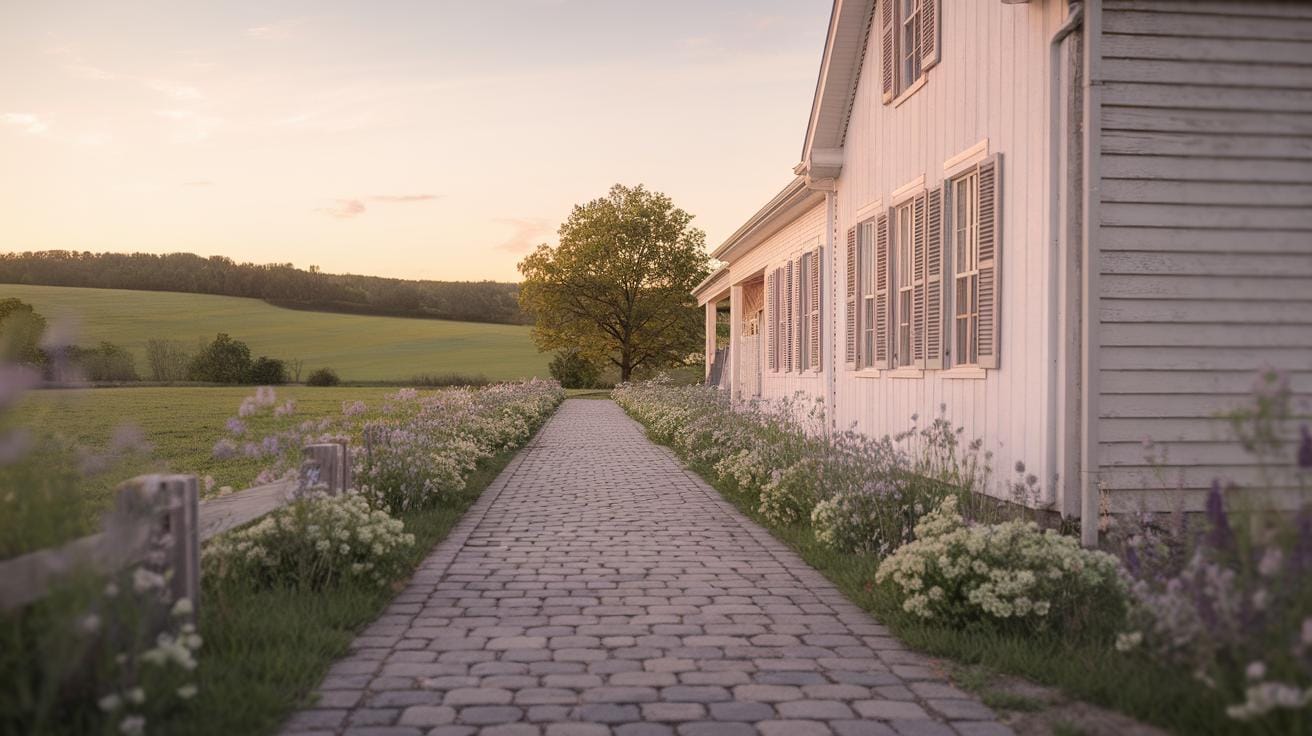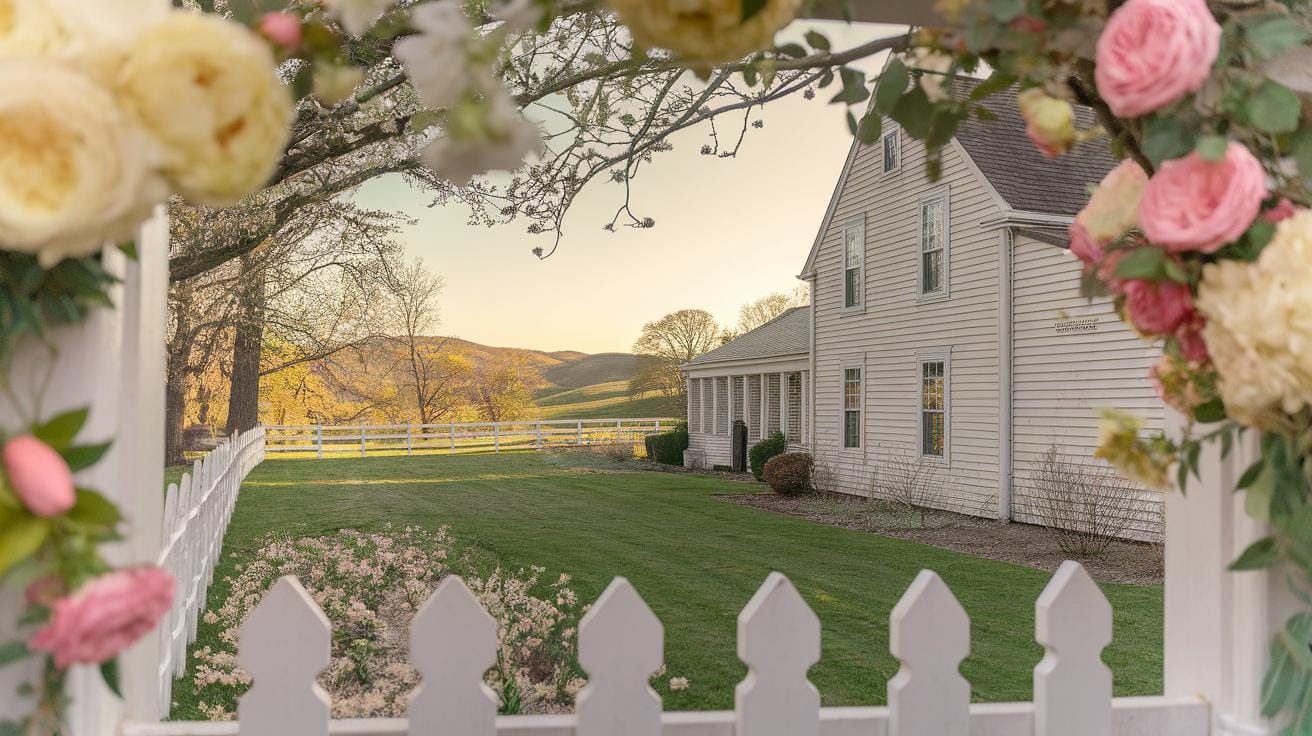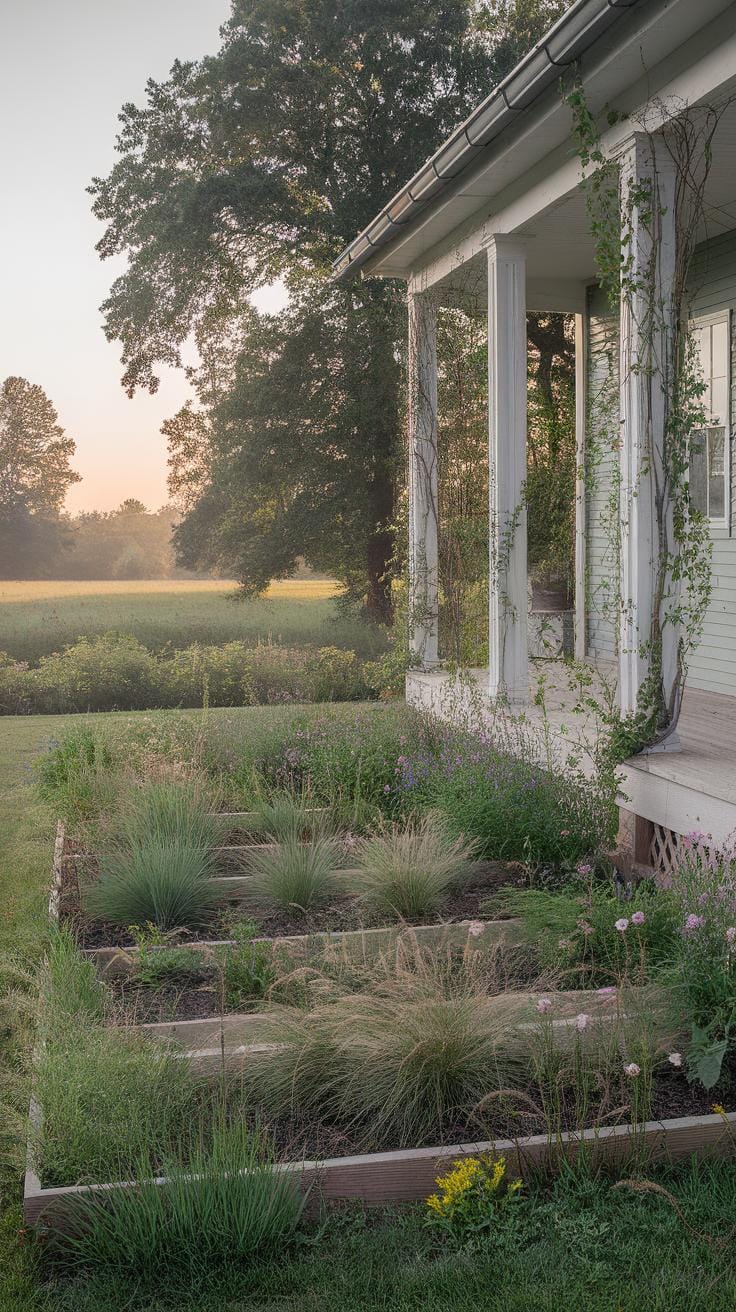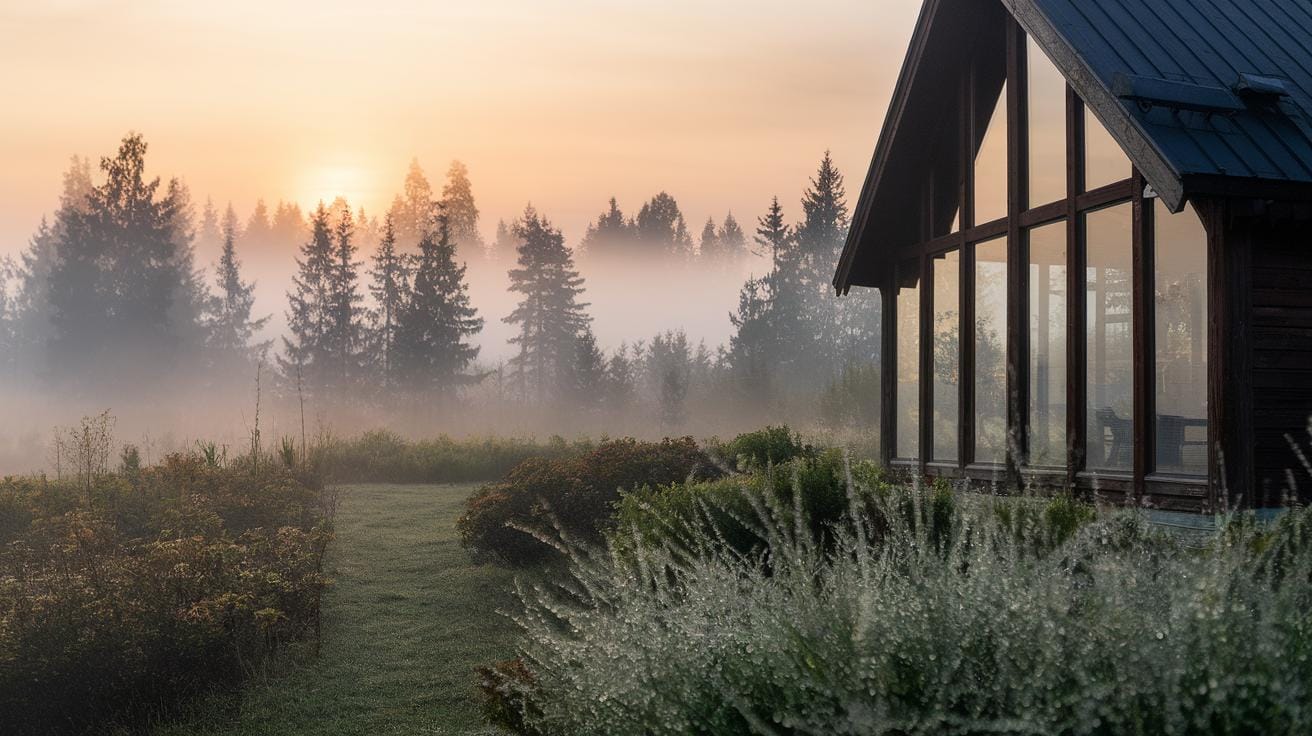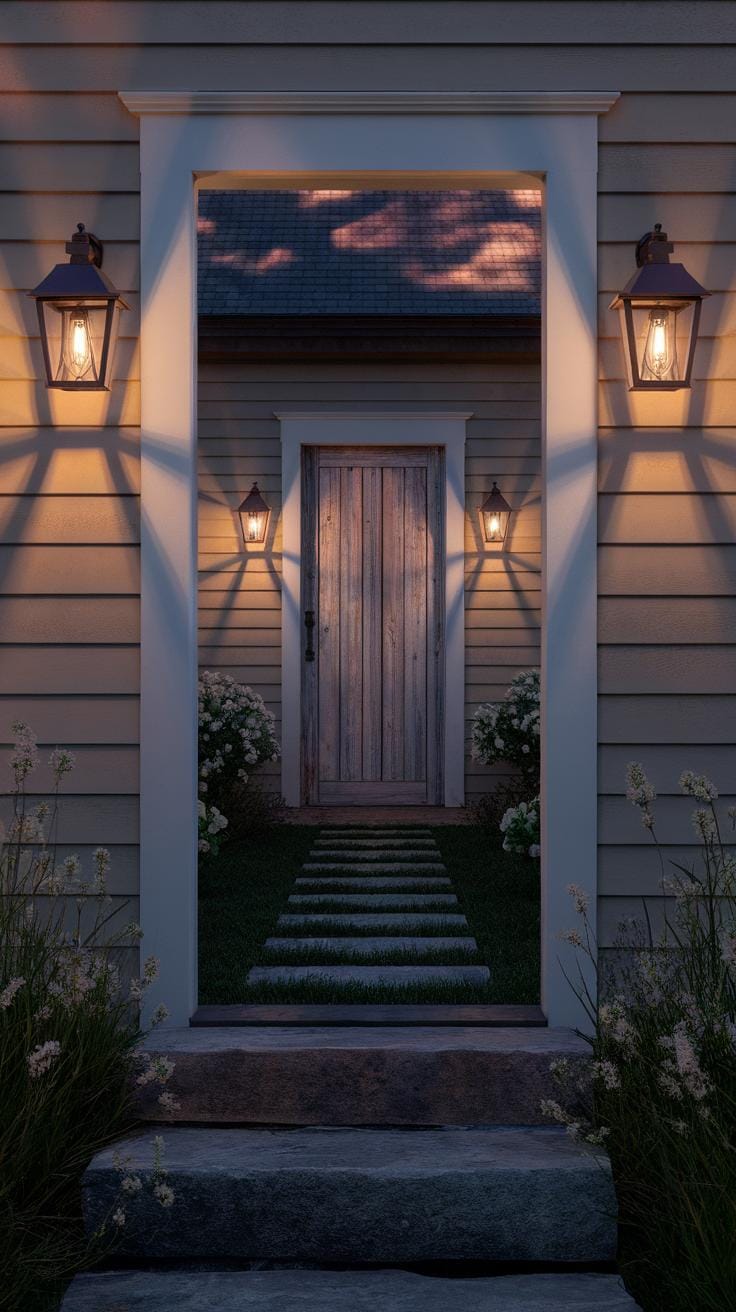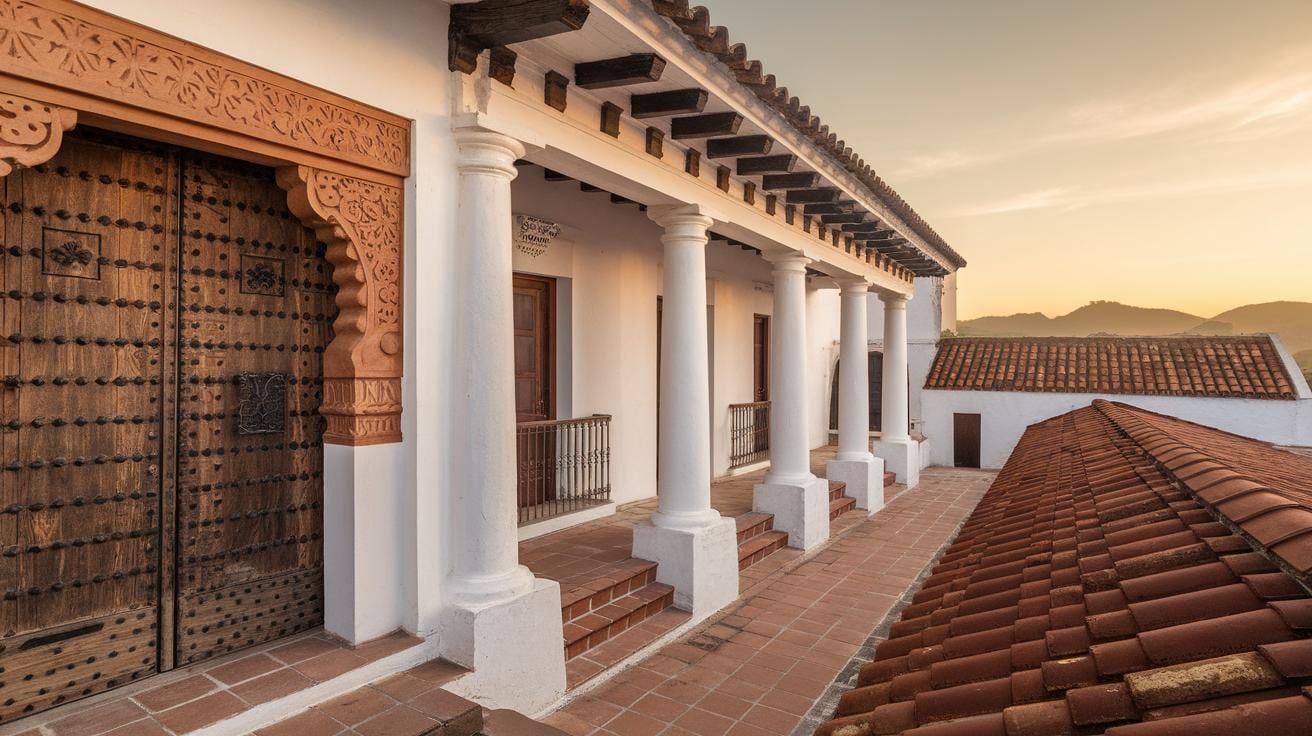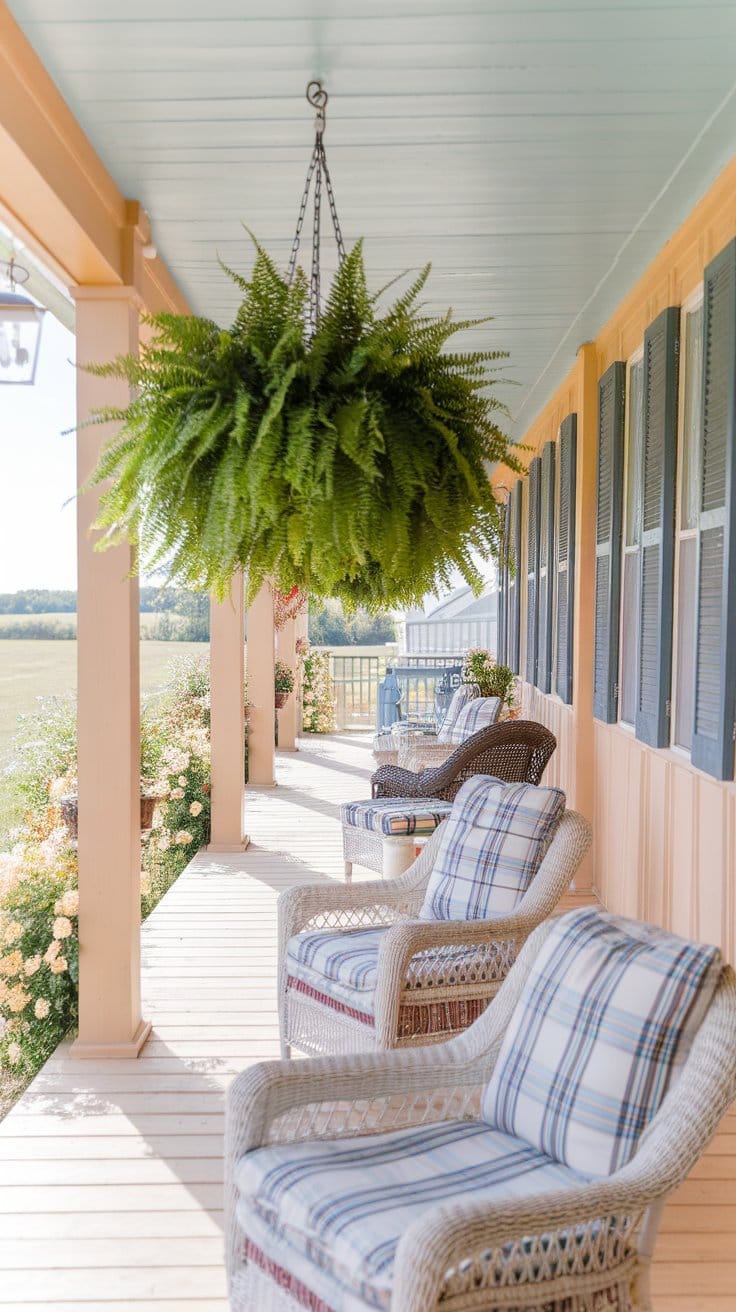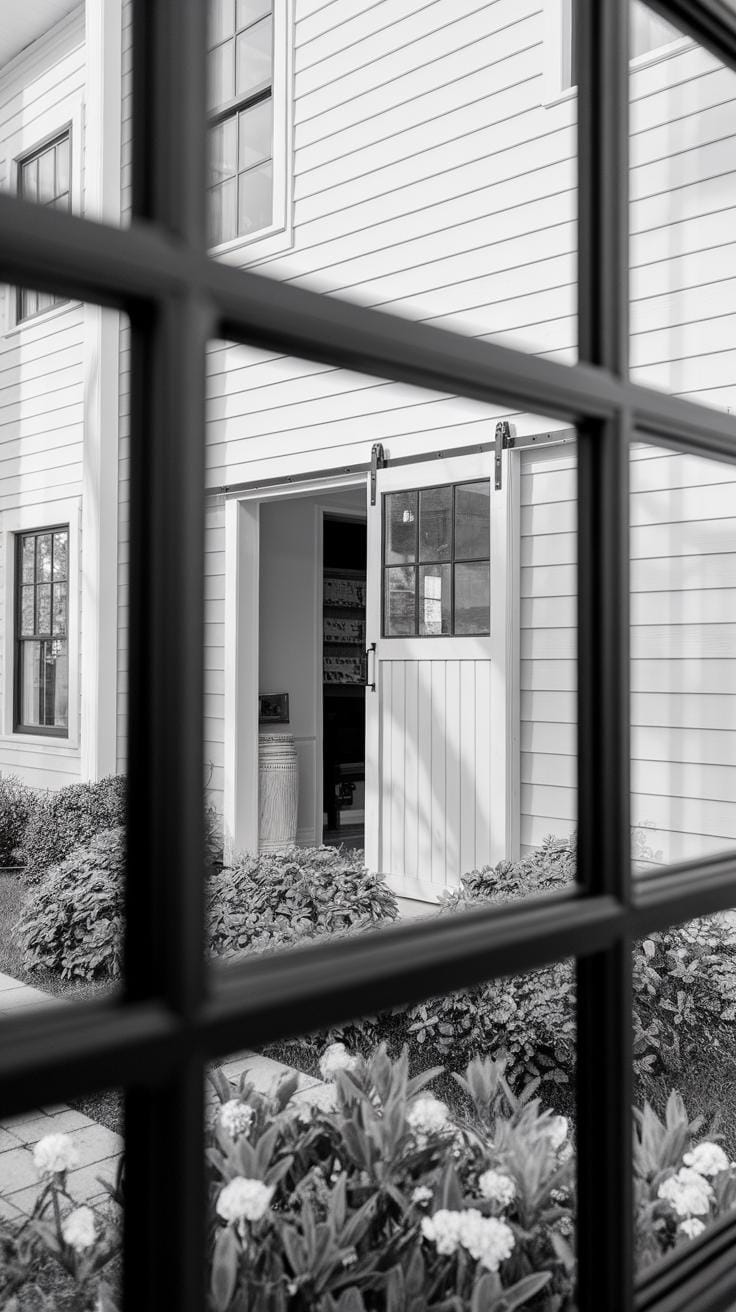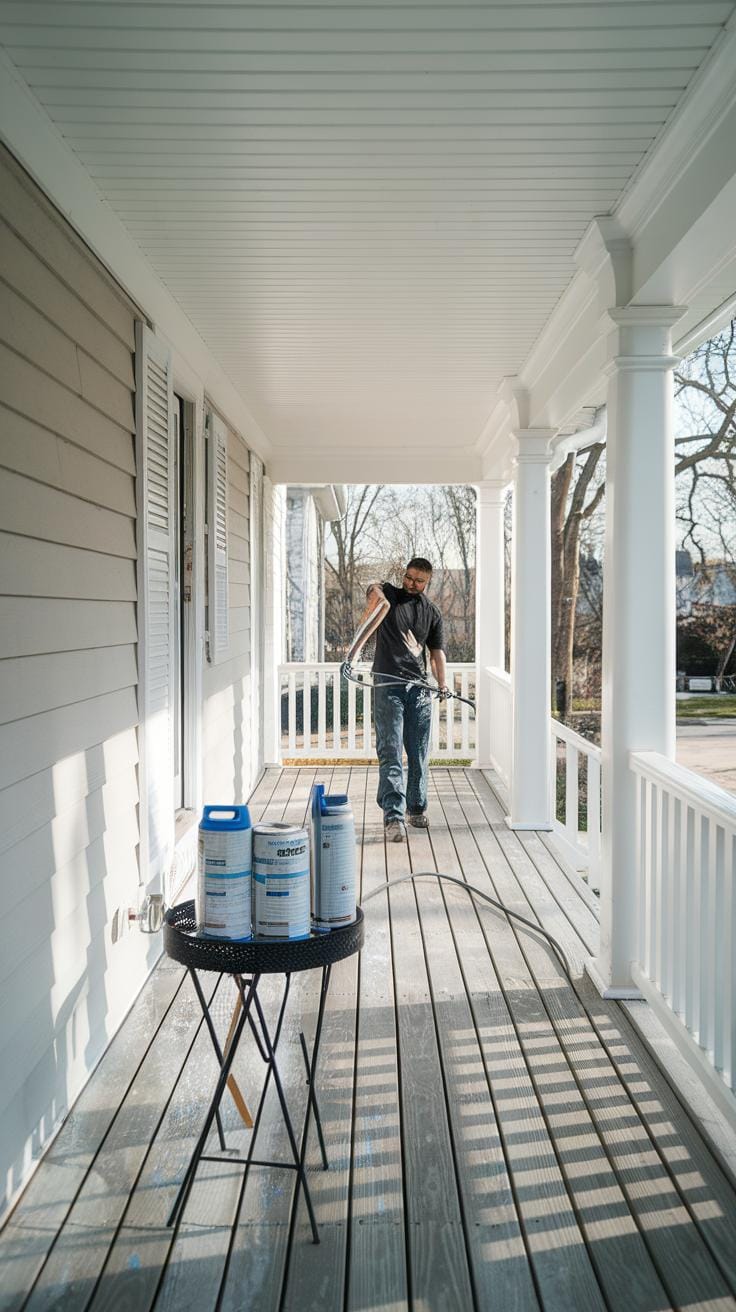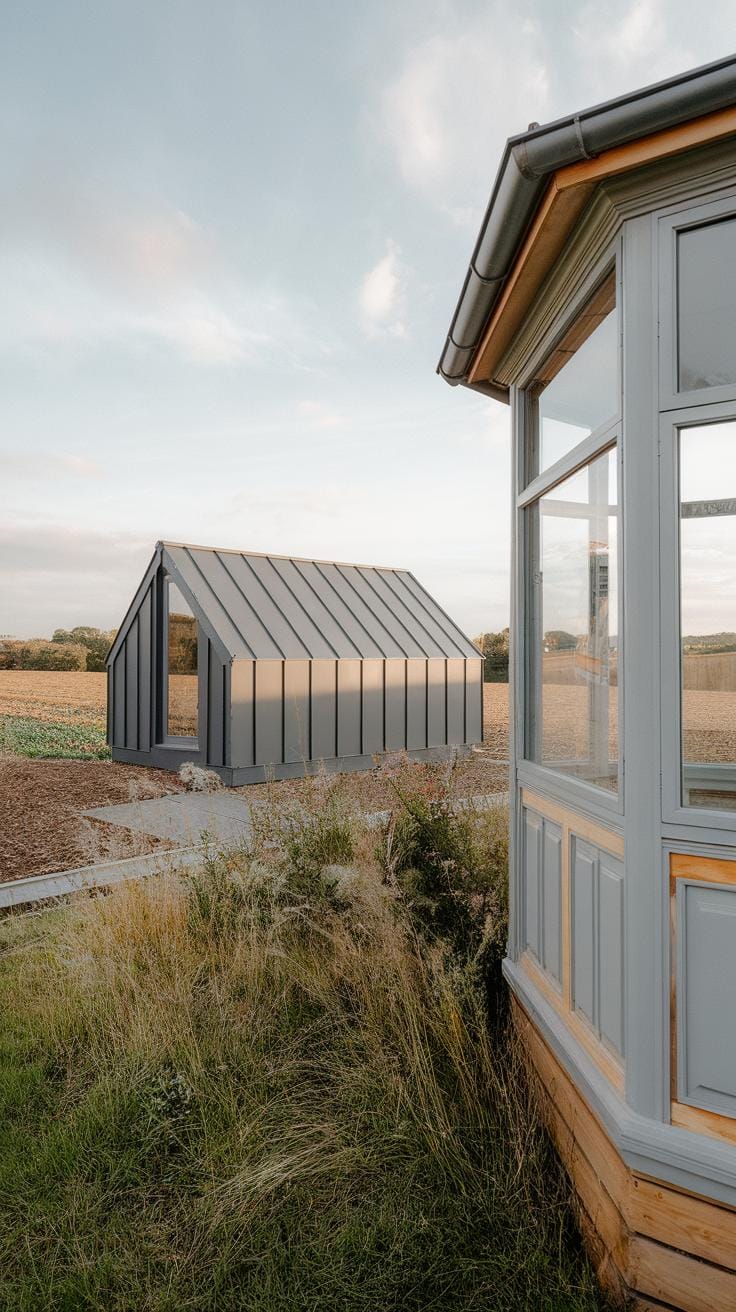Introduction
Farmhouse exterior design holds a special place in home architecture due to its simplicity and timeless appeal. This style often features practical, straightforward elements that enhance a home’s charm without overwhelming complexity. You can create a welcoming and functional outdoor space by focusing on clean lines, natural materials, and carefully chosen accents that reflect a modern farmhouse aesthetic.
Achieving a balance between traditional farmhouse elements and modern trends opens new possibilities for your home’s exterior. This article breaks down tips and ideas that you can easily apply to update your farmhouse exterior. Learn how to select materials, colors, lighting, and landscape features that work together to offer a fresh yet classic farmhouse look.
Key Elements of Farmhouse Exterior Design
Farmhouse exterior design centers on clear, simple shapes that create a welcoming and functional space. You will notice straightforward layouts, often rectangular or L-shaped, which keep construction practical and easy to maintain.
Natural materials play a key role. Wood siding, stone accents, and metal details connect the home to its rural roots. These materials make the house durable against weather while providing texture and warmth to the exterior.
Traditional rooflines add character and serve a purpose. Roofs with steep pitches and wide overhangs help shed rain and snow efficiently. These shapes give the home a distinct silhouette without complicated details.
Do you want a look that blends timeless tradition with everyday practicality? Farmhouse design offers a balance that fits many lifestyles, especially if you value a clean, grounded appearance that stands the test of time.
Traditional Materials That Define Farmhouse Style
Farmhouse exteriors often feature wood, stone, and metal for both function and style. Cedar and pine are common woods used for siding and trim. They resist decay and can be painted or stained to suit your taste.
Stone often appears around foundations, chimneys, or as accent walls. It adds strength and protects from harsh weather while giving the home a rugged, natural look.
Metal elements, like tin roofs or hardware, provide durability and contrast with the softer wood and stone. Metal roofs reflect heat, making buildings cooler in summer, and they last longer than many other roofing materials.
What materials are easiest to maintain in your climate? Choosing the right combination will reduce upkeep while keeping the farmhouse look authentic and practical.
Classic Roof Designs and Structural Features
Steep gable roofs are a hallmark of farmhouse design. They allow rain and snow to slide off quickly, protecting your home from water damage. This shape also creates attic space that you can use for storage or extra rooms.
Central chimneys anchored in these roofs provide heat efficiently and serve as a visual focal point. Many historic farmhouses placed chimneys centrally to heat multiple rooms with one fireplace.
Wide eaves and covered porches extend the roofline and shield walls and entrances from the elements. These features add outdoor living space while reducing the wear on siding and doors.
Have you considered how your roof design can improve your home’s comfort and lifespan? Classic farmhouse roofs do more than look good; they protect and support your home’s structure daily.
Choosing Color Schemes for Modern Farmhouses
Color plays a key role in farmhouse exterior design. It sets the tone and mood for your home’s curb appeal. A well-chosen color scheme highlights architectural features and complements the natural surroundings.
Neutral palettes often form the base of modern farmhouse exteriors. They provide a calm, clean look that blends effortlessly with rural or suburban landscapes. With a neutral base, you can add personality through contrasting trim colors. This contrast brings a fresh and updated charm while keeping the rustic feel intact.
How can you use color to balance tradition with modern style? Think beyond simple white or beige by considering subtle gray hues or warm tans. Pair these with darker trims or shutters. This combination draws attention to details like window frames, porch columns, and doors.
Choosing colors with care turns your farmhouse into a stylish yet approachable home that stands out for the right reasons.
Neutral Base Colors That Create Timeless Appeal
Common neutral colors bring a timeless quality to farmhouse exteriors. White is a classic choice that brightens surfaces and creates a clean canvas.
Beige adds warmth to your home while blending well with natural elements like wood, stone, and greenery. Light and medium grays create a cool, modern backdrop without overwhelming your farmhouse’s design.
Neutral tones often react well to lighting changes throughout the day and seasons. This makes your home look inviting year-round. They also allow you to highlight architectural shapes and textures without distraction.
When selecting your neutral base, consider how it interacts with your environment. Will your farmhouse stand beside a green field or urban setting? A soft beige might blend better with earthier surroundings, while crisp white fits almost anywhere.
Accent Colors to Add Depth and Interest
Dark trim colors create striking contrast on farmhouse exteriors. Black shutters, doors, and window frames add depth and modern charm.
Black stands out against light neutral bases and emphasizes clean lines and shapes. It gives a polished, tailored look that balances rustic materials.
You can also use deep navy, charcoal, or forest green for a softer contrast that still commands attention. These tones break monotony and bring focus to details like porch railings or metal fixtures.
Think about your front door as a focal point. Painting it black or another bold dark hue creates strong curb appeal and invites guests.
How might a simple color addition change the overall feel of your farmhouse exterior? Accent colors transform your home from plain to eye-catching without losing authenticity.
Incorporating Natural Landscaping
Simple landscaping with native plants keeps your farmhouse exterior connected to its surroundings. When you choose plants that grow naturally in your region, they require less water and care while creating a setting that feels authentic and relaxed. Native grasses, wildflowers, and shrubs add texture without drawing too much attention away from your home’s design. For example, planting goldenrod or coneflowers gives seasonal color without overwhelming the farmhouse charm. The goal is a balanced look where the greenery frames and supports the house rather than competing with it. How might your outdoor space feel if plants grow easily and complement your home’s character instead of cluttering it?
Selecting Plants That Suit Farmhouse Settings
Look for plants that fit your farm’s environment and need little upkeep. Low-maintenance species like lavender, hydrangeas, or ornamental grasses suit many farmhouse styles and thrive in different conditions. Regional wildflowers also blend well and attract local pollinators. Avoid fussy or exotic plants that require constant care or clash with rustic materials. Think about how each plant will look across seasons and how tall it will grow near windows or walkways. Have you considered a mix of shrubs and flowering plants that bloom at different times? This approach keeps your yard interesting year-round with minimal effort.
Designing Pathways and Outdoor Spaces
Natural stone and gravel pathways enhance the farmhouse look by adding organic textures that feel timeless. Stones like flagstone or fieldstone bring warmth and match wood or brick exterior features. Gravel offers a soft crunch underfoot and drains well after rain. Use these materials to lead guests from the driveway to your front porch or around a garden area. Combining pathways with simple borders of native plants or low shrubs defines spaces without building fences or walls. Can you imagine sitting near a stone fire pit or on a gravel terrace surrounded by native blooms? These additions invite you and your visitors to enjoy the outdoor charm that matches your farmhouse style.
Lighting to Highlight Farmhouse Features
Outdoor lighting plays a key role in showcasing your farmhouse’s architectural charm while helping you stay safe. Placing lights where they highlight unique elements like exposed beams or wood siding creates an inviting look at night. Think about using soft, warm bulbs to gently brighten these areas without overwhelming them.
Safety must also guide your lighting choices. Well-lit pathways reduce trip hazards, and lights near entrances give visitors and family a clear, safe way inside. Consider motion sensors or timed lights to make sure your farmhouse stays illuminated when you need it most.
Could your home’s exterior feel more welcoming after dark with just a few smart lighting updates? You might find that lighting both beautifies and protects your farmhouse in equal parts.
Choosing Fixtures That Match the Farmhouse Look
Simple metal fixtures or lantern-style lights complement the farmhouse style perfectly. Their clean lines and classic shapes keep the design authentic without feeling out of place. Look for finishes like black, bronze, or aged copper to blend smoothly with wood, brick, or stone exterior materials.
Besides fitting the style, these fixtures are often durable and weather-resistant. This makes them practical choices for outdoor use. Your lighting fixtures don’t have to be ornate to make an impact. Sometimes, less really is more.
Have you considered how your light fixtures connect with the rest of your home’s design? Matching them to farmhouse roots strengthens the exterior’s overall harmony.
Lighting Placement for Function and Style
Strategically placing lights near doors, porches, and walkways boosts both safety and curb appeal. Spotlights on porch posts or sconces beside doors create focal points and draw attention to entryways. Pathway lights guide visitors safely while adding subtle charm.
Spacing matters too. Too many lights can clutter the facade, while too few might leave dark, unsafe spots. Use layers of lighting—combine overhead, wall-mounted, and ground lights—to balance brightness throughout your outdoor space.
How can you arrange lights to improve your farmhouse’s look without sacrificing function? Thoughtful placement transforms your home’s exterior into a well-lit, welcoming space every evening.
Using Porch Design to Enhance Exterior Charm
Your porch often serves as the first glimpse visitors get of your farmhouse. It can act as a strong focal point that shapes the entire look of your home’s exterior. A well-designed porch offers practical outdoor living space where you can relax, entertain, or simply enjoy fresh air. Think about how this space fits your lifestyle—would you prefer a quiet spot for morning coffee or a larger area to gather with family and friends?
Choosing the right porch size and layout creates balance and harmony with the rest of your home. Consider the flow from the porch to the yard or driveway. A porch grounded in farmhouse style adds both warmth and function to your façade without crowding it. How can your porch invite people in and encourage them to stay awhile?
Porch Structures That Fit Farmhouse Style
Wooden posts and beams work well to support porches in farmhouse designs. They bring a natural texture that fits the rustic yet clean aesthetic you want. Square or tapered posts often provide a sturdy, simple look that frames the entrance nicely. You can use exposed beams overhead to add visual interest while maintaining structural integrity.
Plan for ample seating like built-in benches or a cluster of chairs to encourage use. This creates a welcoming entry that feels casual and comfortable. A covered porch shields you from the weather but also extends the outdoor living season. How will your porch structure balance durability with farmhouse charm?
Decor Elements That Add Personality
Small touches make your porch feel inviting and personal. Rocking chairs or a wooden swing can add a timeless farmhouse touch while giving you a cozy spot to unwind. Place potted plants or flower boxes around the space to introduce color and life without clutter.
Think of items that reflect your tastes or family traditions, such as lantern-style lights or vintage rugs. Do you have handcrafted pieces or heirlooms that could serve as conversation starters? Personal decor can transform a basic porch into an extension of your home’s character, inviting guests to feel at ease before they even step inside.
Window and Door Selection for Farmhouse Appeal
Windows and doors shape the look and feel of your farmhouse exterior. Choosing the right ones can boost your home’s charm and bring in natural light, making rooms feel bright and airy.
Farmhouse windows often feature simple, clean lines that reflect traditional designs. Their placement should maximize sunlight and highlight architectural details. Doors act as the handshake for your home, welcoming visitors while setting the tone for the style inside.
Think about windows that open wide to catch breezes and let sunshine pour in. Large, well-placed windows reduce the need for artificial light during the day. Doors should be solid but inviting, offering durability and a warm, rustic look. Matching hardware completes the farmhouse story by adding small but important touches that feel authentic.
Have you thought about how your home’s windows and doors affect curb appeal and comfort? Choosing styles that blend function with farmhouse charm can transform your exterior and your daily experience inside.
Window Styles That Suit Farmhouse Homes
Double-hung windows rank high in farmhouse design for both style and function. Their two sashes move up and down, giving you control over ventilation. This traditional look pairs beautifully with exterior shutters, adding texture and color to the facade.
Shutters aren’t just decoration; they offer protection from strong weather and provide a classic, framed look. Painting shutters in contrast colors can highlight these features and deepen the farmhouse aesthetic.
Large panes in double-hung windows let in ample light, filling rooms with natural brightness. You can even customize the grids for a divided-light effect that fits historic farmhouse styles.
Could switching to double-hung windows with shutters bring more light and architectural interest to your home? Think about how this choice balances practical benefits with a timeless look.
Door Choices to Welcome Visitors
Choosing the right front door sets the tone for your farmhouse exterior. Sturdy wooden or paneled doors offer a solid, grounded feeling that fits well with rustic farmhouse themes.
Natural wood doors showcase grain and texture, adding warmth. Painted doors provide a chance to add a pop of color or match trim. Hardware should complement the farmhouse look—consider wrought iron handles and hinges for a traditional touch.
Doors with simple panels or minimal glass keep the farmhouse vibe clean and straightforward. When glass is included, it often features divided panes or frosted finishes for privacy without losing light.
What impression do you want to give visitors right at your doorstep? Selecting a door that combines durability with farmhouse style can make every arrival feel special.
Practical Tips for Maintaining Farmhouse Exteriors
Regular Cleaning and Repairs
Your farmhouse exterior needs simple care to stay looking good and last longer. Clean the siding regularly to remove dirt, mold, and mildew, especially if you have wood or fiber cement siding. Use a mild detergent and a soft brush or a pressure washer on a low setting. Check for any cracks, loose boards, or peeling paint while cleaning.
Inspect your farmhouse exterior after storms or harsh weather for damage like chipped paint or warped wood. Fix small problems soon to avoid bigger repairs later. Tighten loose nails and replace damaged boards quickly. Checking gutters and downspouts helps prevent water damage around your home’s foundation.
Seasonal Preparation
Preparing your farmhouse exterior for each season will protect it year-round. In the fall, clear leaves and debris from gutters to prevent water buildup and ice dams in winter. Apply a fresh coat of weather-resistant paint or sealant on wood surfaces before cold weather arrives.
Winterizing might mean sealing gaps around doors and windows to keep cold air out and protect wooden elements from frost damage. In spring, inspect for winter cracks or rot and repair them early. Thinking about how each season impacts your home helps you plan maintenance that fits your lifestyle and keeps your farmhouse charm intact.
Balancing Modern Elements with Traditional Farmhouse Style
Maintaining the classic look of a farmhouse while adding modern features requires careful planning. Start by choosing clean lines and simple shapes for new additions, such as a porch or a deck. Avoid overly ornate details that clash with the farmhouse’s straightforward character.
Consider color schemes that blend old and new. White or earth tones paired with sleek black or metal accents offer a fresh but familiar feel. Think about how windows and doors fit into the overall look—select styles that echo traditional farmhouse shapes but with contemporary finishes.
Ask yourself which modern comforts you want without giving up charm. Can you add energy-efficient lighting or smart security concealed by traditional trims? Small touches like modern hardware or lighting fixtures add convenience and style without overwhelming the original design.
Incorporating Modern Materials Thoughtfully
Using metal accents can introduce a modern edge without losing farmhouse warmth. Black steel railings, barn-style sliding doors with metal tracks, or zinc roofing offer durability and contrast nicely with wood and stone.
Energy-efficient windows give your home a fresh appearance and reduce utility costs. Look for styles with divided panes or grid patterns that mimic farmhouse windows to keep the traditional look. Fiberglass or wood-clad frames blend well with rustic exteriors and require less maintenance.
Choose siding materials that stay true to farmhouse roots but resist weather and wear. Fiber-cement boards or engineered wood provide a clean surface that lasts. These options help your home stay fresh longer while keeping the classic farmhouse feel.
Design Choices That Enhance Functionality
Integrating smart technology doesn’t mean sacrificing farmhouse style. Install smart lighting systems hidden behind shutters or within exterior fixtures designed in a farmhouse style. You control brightness and color without changing the look of your porch or entryway.
Solar panels can fit discreetly on roofs without detracting from the farmhouse’s character. Placing them on less visible slopes keeps their presence low-key but benefits high.
Practical features like rainwater harvesting systems or insulated garage doors improve everyday use. Select options that blend with your home’s style, such as wooden-look garage doors. You get modern convenience while protecting the farmhouse’s historic charm.
Planning Your Farmhouse Exterior Design Project
Planning a farmhouse exterior makeover starts with clear goals. What do you want to achieve? Are you focusing on curb appeal, durability, or energy efficiency? Write down your priorities before anything else.
Set a budget that fits your financial limits but still allows for quality work. Break down the budget into key areas like siding, roofing, windows, and landscaping. This helps keep expenses in check and prevents surprises later.
Think about the timeline too. How soon do you want the project done? Seasonal weather can affect construction schedules, so plan accordingly. Have you considered how a phased project might ease costs and effort?
Once your goals and budget are clear, create a checklist of tasks. Include design ideas you like, materials you want, and the contractors you might need. This structure keeps your project organized and on track.
Setting Goals and Budgeting
Start by listing what matters most in your farmhouse exterior. Is it updating the siding, replacing the porch, or adding a modern front door? Prioritize these elements before spending money.
Think about how much you can afford to spend overall. Divide your budget into sections, assigning each a fair share. For example, if siding is key, allocate more funds there than less visible areas.
Consider future maintenance costs too. Choosing durable materials might cost more upfront but saves money over time. What’s your plan for upkeep?
Keep some budget aside for unexpected expenses. Small issues like hidden repairs often come up during exterior work. Are you prepared for this possibility?
Selecting Professionals and Materials
Find contractors experienced in farmhouse-style projects. Ask to see previous work, especially homes with similar designs. This helps ensure they understand the look and structure you want.
Interview several professionals to compare prices and services. Check reviews and ask for references. Do they communicate clearly and respect your vision?
For materials, choose those that fit farmhouse traditions but offer modern durability. Wood siding, metal roofs, and stone accents can work well together. Look for suppliers who carry these and can advise on quality.
Don’t overlook eco-friendly options. Some materials can reduce energy costs and last longer. Have you explored sustainable choices that match farmhouse style?
Conclusions
Your farmhouse exterior design plays a major role in your home’s personality and curb appeal. By focusing on practical design choices and modern touches, you can create an inviting and stylish space. Use natural materials such as wood and stone to enhance warmth, while keeping design elements simple and purposeful. This approach ensures your home remains grounded and comfortable.
As you consider updates or new builds, think about how each design choice complements the farmhouse theme. From roofing to lighting, every detail can contribute to a cohesive look. Implementing these tips will help you achieve a farmhouse exterior that balances modern charm with traditional roots, making your home both attractive and functional year-round.


